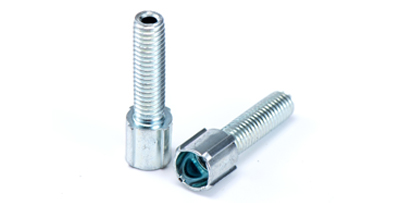In industrial and construction applications, Square Neck Phillips Head Bolts are widely used for their excellent fastening properties and stability. However, to ensure the durability and long-term reliability of these Bolts in a variety of environmental conditions, the surface finish is critical.

1. Galvanized
Galvanizing is a common surface treatment that improves the corrosion resistance of Bolts by coating them with a layer of zinc. There are two main types of galvanizing: hot dip galvanizing and electro-galvanizing.
Hot dip galvanizing:Bolts are dipped into molten zinc so that the zinc forms a thick protective layer. This method provides excellent corrosion resistance and is suitable for applications exposed to outdoor or wet environments.
Electro-galvanizing:A zinc layer is deposited on the surface of the bolt through an electrochemical reaction. This treatment has a thinner zinc layer, but is still effective in improving corrosion resistance and is suitable for general indoor environments or mildly wet environments.
2. Electroplating
Electroplating is a method of depositing a metal film (e.g. nickel, chromium, etc.) on the surface of a bolt through an electrochemical reaction. Electroplating can provide different surface effects, including gloss, color and corrosion resistance.
Nickel plating:Nickel plating provides good corrosion and wear resistance and is suitable for applications requiring high mechanical properties and appearance.
Chromium Plating:Chromium plating not only provides excellent corrosion resistance, but also significantly improves surface hardness and wear resistance for applications requiring high strength and durability.
3. Blackening
Blackening (or black oxide treatment) is a method of oxidizing the surface of a bolt to form a black oxide film. Blackening is often used to improve the corrosion and wear resistance of bolts.
Blackening: By creating a thin black oxide film on the surface of the bolt, it provides a certain level of corrosion and oxidation resistance, and is often used to increase the coefficient of friction of the bolt, thereby enhancing the robustness of the connection.
How to choose a suitable surface treatment
1. Environmental conditions:Choose the appropriate surface treatment according to the environment in which the bolt will be used. If the bolts will be exposed to humid or corrosive environments, it is recommended that they be galvanized or plated to provide better protection.
2. Application requirements:choose the treatment according to the specific needs of the application. For example, if there is a high demand for appearance and strong wear resistance is required, nickel or chromium plating can be chosen; if only basic corrosion resistance and low cost is required, blackening can be chosen.
3. Cost factor:different surface treatment methods have different costs. Cost and performance need to be weighed when making a choice to ensure the best durability and results within your budget.
The surface finish of Square Neck Cross Bolts is critical to their durability and performance. Galvanizing, plating and blackening each have their own advantages and disadvantages, and choosing the right finish requires consideration of the specific application environment, performance requirements and cost budget. By choosing the right surface treatment, the corrosion resistance and service life of the bolt can be significantly improved, ensuring its reliability and stability in a variety of applications.





